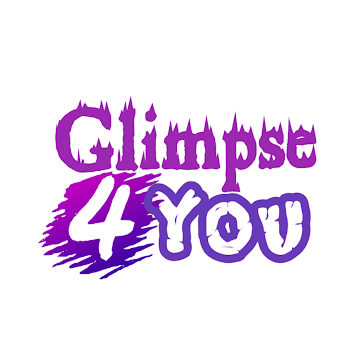Define blockchain technology
A digital public ledger, or blockchain, is a digital ledger that records online transactions.
The blockchain ensures the integrity of the cryptocurrency by permanently encrypting, verifying, and recording transactions.
A blockchain is similar to a bank’s ledger, but it is backed by and accessible to everyone who uses cryptocurrency.
A deeper definition of blockchain technology
When you swipe your credit card at a store, the fee must go through a financial institution such as a bank, which confirms the transaction, debits the cardholder's account, and passes the fee to the retailer to complete the sale.
This can be expensive - banks charge a fee for the service - and unsafe for users, as recent on Target and POS systems have shown.
There is also the potential for credit card fraud, which costs merchants in the United States hundreds of millions of dollars annually.
Blockchain technology fixes these problems. As its name suggests, a blockchain is made up of a series of "blocks".
The blockchain software records every transaction in a block without the help of a third party such as a bank or payment processor.
The blockchain algorithm automatically encrypts and authenticates the transaction, which is instantly visible to all users, reducing the possibility of fraud.
There is no personal or identifiable information in the terms of the transaction.
Blockchain technology was invented to control Bitcoin, the first and most popular cryptocurrency.
Some newer platforms, such as Ethereum, use blockchain to provide a digital ecosystem for distributed computing, effectively using cryptocurrency to lubricate businesses.
In Ethereum, blocks run a so-called smart contract to ensure certain conditions are met before a service is provided.
Every blockchain user owns a copy of the complete blockchain, just like the rest of the world.
This makes it virtually impossible to tamper with: a would have to harness more computing power than each user's to change the blockchain in their favor.
Because of this strict security, major institutions such as Citigroup and the London Stock Exchange have adopted blockchain technology, hoping to use it, for example, to protect intellectual property or store investment records.
Artists and musicians can use blockchain technology to secure their work and receive fair compensation from fans.
It may not be long before artists give up licensing their work to a publisher, who takes it apart when they can register it directly in the blockchain.
A blockchain-based automated delivery-versus-payment (DvP) system was jointly developed by the Monetary Authority of Singapore (MAS) and the Singapore Stock Exchange (SGX). Its purpose is to allow the settlement of counterfeit securities across various blockchain platforms.
Blockchain systems simplify post-trade operations
In a joint statement issued over the weekend, MAS and SGX stated that the blockchain system will help simplify post-trade processes and further shorten settlement cycles and that the DvP system works with payments and product change simultaneously to ensure that securities are delivered only upon payment.
The system was developed together with technology partners Anquan, Deloitte, and Nasdaq. DvP prototypes have already shown that settlements can take place in different digital tokens on different blockchain platforms. Both MAS and SGX have published an industry report detailing payment settlement using smart contracts.
"This initiative has proved the potential of blockchain technology and the benefits it may bring to the financial industry in the near to medium term," said Subnidu Mohanty, a senior analyst at RBC Capital Markets. officer in charge of MAS. The concept of asset advantages, as well as other knowledge obtained from this project, can be applied to a wide range of the economy, creating a new world of opportunity.”
Blockchain Technologies
To learn more about blockchain technology, in terms of the underlying technology, and use cases, here are some important definitions.
- Decentralized trust: The main reason why organizations use blockchain technology, rather than other data warehouses, is to provide a guarantee of data integrity without relying on a central body. This is called decentralized trust through trusted data.
- Blockchain Blocks: The name Blockchain comes from the fact that data is stored in blocks, and each block is connected to the previous block, forming a chain-like structure. With blockchain technology, you can only add (append) new blocks to the blockchain. After a block has been added to the blockchain, it cannot be modified or deleted.
- Consensus Algorithms: Algorithms that enforce the rules within the blockchain system. Once the participating parties set up the blockchain rules, the consensus algorithm ensures that these rules are followed.
- Blockchain nodes: Blockchain data blocks are stored on nodes - volumes that keep data synchronized or updated. Any node can quickly determine if a block has changed since the time it was added. When a full new node joins the blockchain, it downloads a copy of all blocks currently on the chain. After the new node is synchronized with the other nodes and the latest version of the blockchain is available, it can receive any new blocks, just like the other nodes.
Blockchain nodes are divided into two categories.
- Full nodes keep a complete copy of the blockchain on their computers.
- Lightweight nodes store only the latest blocks, and older blocks can be requested when users need them.
The value of blockchain technology in business
- Cultivates trust between parties doing business together by providing shared, trusted data
- Removes siled data by integrating data into a single system through a shared distributed ledger within a network that can be accessed by authorized parties
- Provides a high level of data security
- Reduces the need for third-party intermediaries
- Creates clear manipulation records in real-time that can be shared among all participants
- Allows participants to guarantee the authenticity and safety of products placed in the trade stream
- Allows goods and services to be seamlessly traceable and traceable across the supply chain



Comments
Post a Comment